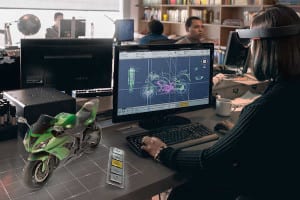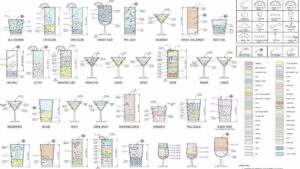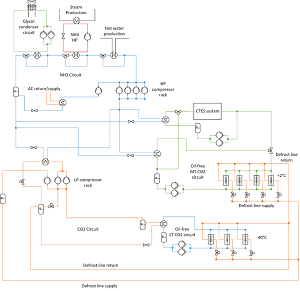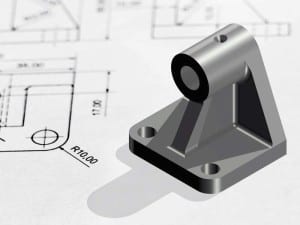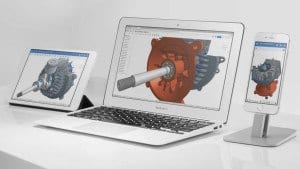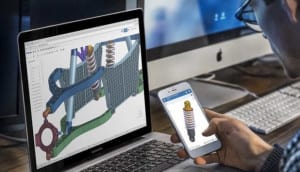We are one of the best Australian Design & Drafting service companies that offer a cutting-edge 2D drafting solution. Without investing in expensive technology or going through any tedious recruitment headaches. If you’re looking for the importance of effective 2D drafting, then we offer various types of 2D drafting services. Additionally, there are numerous advantages provided by Australian Design & Drafting that comes with outsourcing.
Suppose you’re a firm that looks to draw out a design for a home, office, restaurant or any other type of building. Additionally, users can add a critical role that uses 2D drafting, offering a successful outcome.
We provide 2D drafting that uses one step that cannot be affordable to skip. It comes through encountering the problems when designing your building. Additionally, 2D drafting requires skills, time, and expertise. With outsourcing, one should not worry about doing 2D drafting. Users can outsource 2D drafting by adding Australian Design & Drafting service company. Now get big by saving time, effort and cost.
2D drafting services offered:
No matter what type of design plan users want, they can avail effective 2D drafting plan. It outsources Australian Design & Drafting services by offering the best mechanical engineers. 2D drafters come with their skills and knowledge to deliver cutting-edge 2D drafting services for your building. Users can avail of 2D drafting services for below following services:
- Architectural drawings
- Preliminary drawings
- Millwork drawings
- Structural design drawings
- Engineering (MEP) drawings
- Construction or working drawings
- Assembly drawings
- Shop drawings
- Manufacturing drawings
- Fabrication drawings
- Presentation drawings
- Machine drawings
- Structural steel detailing
What makes Australian Design & Drafting the best place for 2D drafting?
Here’s why the Australian Design & Drafting company use Australia’s preferred location for 2D drafting:
- Use Latest 2D drafting software and tools: Australian Design & Drafting comes with the latest 2D drafting tools and software. It includes Autodesk, AutoCAD®, MicroStation®, SolidWorks®, Staad Pro®, Ansys®, 3DS Max®, VRay, Unigraphics/NX, X-Steel, Revit®, ProE®, CATIA®, ® Inventor® and to create world-class 2D drafts.
- Skilled 2D drafters: Outsource 2D drafting with the Australian Design & Drafting service company, and offer access to a professional team of drafters and engineers. It collaborates with the company, understanding the needs and offering satisfactory 2D drafting solutions.
We offer a 2D drafting solution with preliminary drawings, architectural drawings, and other structural drawings. Develop a firm base for using design plans.
- 2D drafting in CAD: We at Australian Design & Drafting comes with extensive knowledge of conducting 2D drafting in CAD, along with exact scaling and specifications added by you.
- Huge cost savings: By outsourcing, one can cut down current costs by 50%. It provides access to drawn 2D drafts that meet your expectations.
Outsource 2D drafting with Australian Design & Drafting services from payroll, mundane recruitment, and infrastructure-related hassles. If you want to outsource today, then 2D drafting service prefer to start with? If you are looking to outsource 2D drafting? If you have any queries on outsourcing or want to express your views. We at Australian Design & Drafting would be happy to serve you the best.
Opt for affordable 2D drafting services
The solution is simple. All you have to do is outsource to Australian Design & Drafting and you can avail a cutting edge 2D drafting solution, without having to invest in expensive technology or going through tedious recruitment headaches. Read on to find out more about the importance of effective 2D drafting, the varied types of 2D drafting services offered by Australian Design & Drafting and the numerous benefits that comes with outsourcing.
If your firm is drawing out a design for an office, home, restaurant or any other type of building, then you would definitely be aware of the critical role that 2D drafting plays in the successful outcome of a building. 2D drafting is one step that you cannot afford to skip, even though you may encounter other problems when designing your building. Moreover, 2D drafting also requires time, skill and expertise. With outsourcing, you need not worry about doing 2D drafting anymore. You can simply outsource 2D drafting to Australian Design & Drafting and enjoy big savings on cost, time and effort.
2D drafting services offered :
No matter what type of design plan you want, you can avail an effective 2D drafting plan by outsourcing to Australian Design & Drafting. We have best mechanical engineers and 2D drafters who can put their skills and knowledge to deliver a cutting-edge 2D draft for your building. You can avail 2D drafting services for any one of the following:
- Architectural drawings
- Preliminary drawings
- Millwork drawings
- Assembly drawings
- Shop drawings
- Structural design drawings
- Engineering (MEP) drawings
- Presentation drawings
- Machine drawings
- Manufacturing drawings
- Fabrication drawings
- Structural steel detailing
- Construction or working drawings
What makes Australian Design & Drafting a hot destination for 2D drafting?
Here’s why Australian Design & Drafting is the Australia’s preferred location for 2D drafting:
1. Latest 2D drafting software and tools: Australian Design & Drafting employ the very latest in 2D drafting tools and software, such as, AutoCAD®, MicroStation®, SolidWorks®, Staad Pro®, Ansys®, 3DS Max®, VRay, X-Steel, Revit®, ProE®, CATIA®, Autodesk® Inventor® and Unigraphics/NX to create world-class 2D drafts.
2. Skilled 2D drafters: Outsourcing 2D drafting to Australian Design & Drafting can give you access to a dedicated team of drafters and engineers who will collaborate with your company, understand your needs and provide you with a satisfactory 2D drafting solution. With a 2D drafting solution for your preliminary drawing, architectural drawing or structural drawing, you can develop a firm base for your design plans.
3. 2D drafting in CAD: Australian Design & Drafting have an extensive knowledge of conducting 2D drafting in CAD, as per the exact scaling and specifications given by you.
4. Huge cost savings: By outsourcing, you can cut down on your current cost by a whopping 50% while getting access to professionally drawn 2D drafts that meet your expectations.
Outsource 2D drafting to Australian Design & Drafting today and experience freedom from mundane recruitment, payroll or infrastructure related hassles.
If you were to outsource today, which 2D drafting service would you prefer to start with? Have you outsourced 2D drafting before? If yes, how did it go? If you have a question on outsourcing or want to express your views, just leave a comment in the box below. We, at Australian Design & Drafting love to hear from you!
What is 2D drafting?
2D drafting is the creation of technical drawings or plans using two-dimensional representations. These drawings depict the layout, dimensions, and specifications of objects, buildings, machinery, or systems. In 2D drafting, lines, shapes, symbols, and text are used to communicate design details and instructions effectively.
Traditionally, 2D drafting was done manually using drafting tools like pencils, rulers, and compasses on drafting paper. However, with advancements in technology, computer-aided design (CAD) software has become the primary tool for 2D drafting. CAD software allows designers and drafters to create, edit, and manipulate drawings digitally, increasing efficiency and accuracy in the drafting process.
2D drafting is essential in various industries such as architecture, engineering, construction, manufacturing, and interior design. It is used to produce architectural plans, engineering drawings, electrical schematics, circuit diagrams, and more. These drawings serve as blueprints for construction, fabrication, or assembly, guiding the implementation of design concepts into physical reality.
What are the benefits of 2D drafting?
The benefits of 2D drafting include:
Clarity and Precision: 2D drafting allows for clear and precise communication of design ideas, dimensions, and specifications, ensuring that all stakeholders understand the intended concept accurately.
Efficiency: With the use of computer-aided design (CAD) software, 2D drafting significantly increases drafting efficiency compared to manual drafting methods. CAD tools offer features such as templates, symbols libraries, and automated dimensioning, speeding up the drafting process.
Cost-Effectiveness: 2D drafting can be more cost-effective than 3D modeling, especially for simpler projects or when detailed 3D visualization is not necessary. It requires less computational power and can be performed using less expensive software packages.
Compatibility and Interoperability: 2D drawings are often compatible with various software applications and easily shareable across different platforms. This facilitates collaboration among team members, suppliers, contractors, and clients who may use different software tools or systems.
Documentation and Standards Compliance: 2D drafting allows for the creation of standardized drawings that comply with industry-specific regulations, codes, and standards. These drawings serve as legal documents and reference materials throughout the project lifecycle.
Versatility: 2D drafting can be applied to a wide range of industries and disciplines, including architecture, engineering, construction, manufacturing, electrical design, and interior design. It is adaptable to different project requirements and scales.
Accessibility: Unlike 3D modeling, which may require specialized training and expertise, 2D drafting can be more accessible to beginners and individuals with basic drafting skills. Many CAD software programs offer user-friendly interfaces and tutorials to support learning and proficiency.
Historical Continuity: While 3D modeling is becoming increasingly prevalent, 2D drafting remains an essential skill in many industries due to its historical continuity. Many legacy designs and documents are in 2D format, necessitating proficiency in 2D drafting for maintenance, renovation, or archival purposes.

